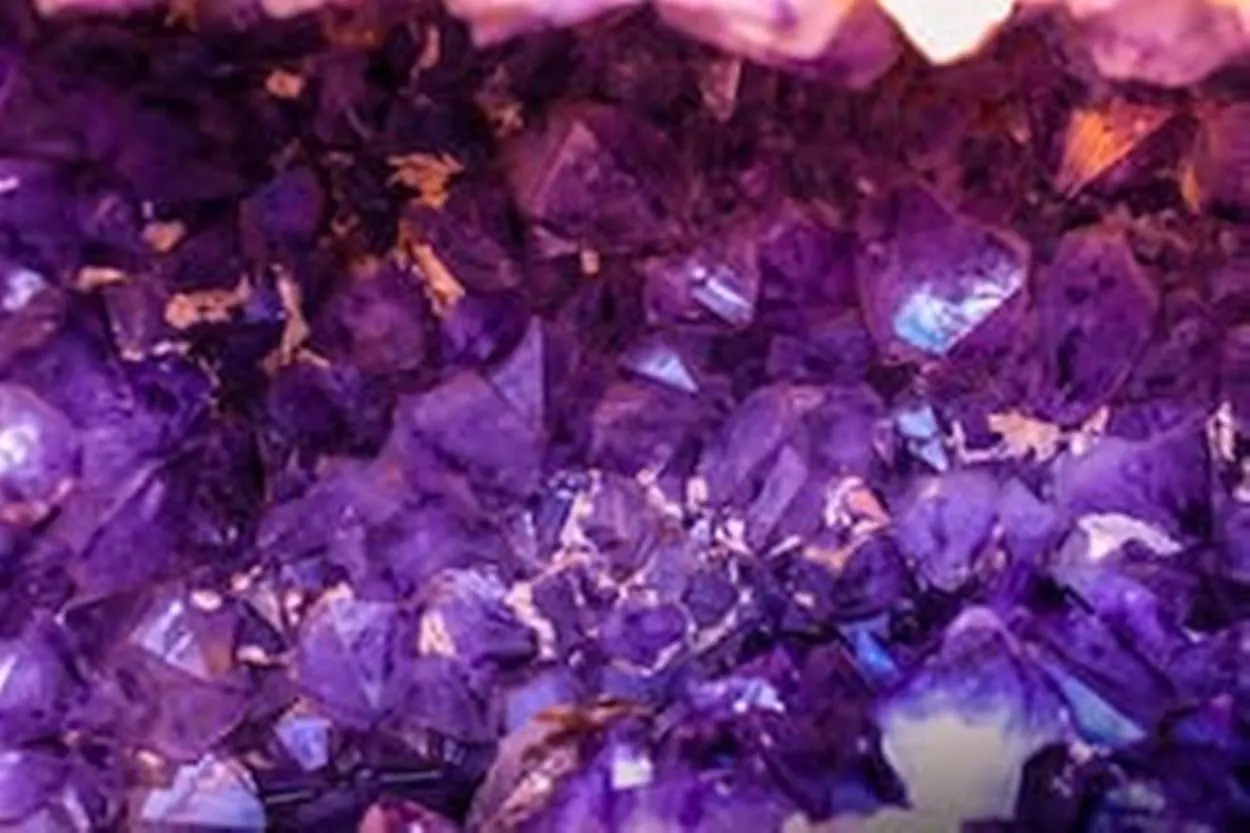Colors play a vital role in our lives. Colors also influence the mood, emotions, and feelings of a person. It can relate memories and beliefs to particular colors. We can say that colors have a powerful impact on feelings and psychological reactions.
The term “color” in physics refers to electromagnetic radiation with a specified spectrum of visible wavelengths. Those wavelengths of radiation make up the visible spectrum, a subset of the electromagnetic spectrum.
Purple is thought to be darker than violet when comparing the two colors. While sharing the same spectral range, the wavelength of each color varies. The purple hue has a longer wavelength than the violet color.
Find out more about their differences by reading this blog post.
Types of Colors
Colors based on emotions can be divided into two forms.

Warm and Cold Colors
Warm colors include yellow, red, orange, and other combinations of these colors.
Cold colors are blue, purple, and green, and their combinations.
Colors are of two types: primary and secondary colors.
Primary Colors
The primary colors are red, blue, and yellow.
Secondary Colors
When we put two primary colors together, a secondary color is produced. For example, by mixing yellow and red, we create orange.
Green and violet are also included in secondary colors.
What is Color Wavelength?
According to Newton, color is a characteristic of light. So, before proceeding with colors, we have to know about light and its wavelength. Light is a form of energy; it has properties of wavelength and particles.
We see colors above wavelengths ranging from 400 nm to 700 nm. Light with this wavelength is known as visible light because these colors are visible to the human eye. Light of shorter wavelengths cannot be visible to the human eye, but another living organism can see them.
Different wavelengths of visible light colors include:
- Violet: 380–450 nm (688–789 THz frequency)
- Blue: 450–495 nm
- Green: 495–570 nm
- Yellow: 570–590 nm
- Orange: 590–620 nm
- Red: 620–750 nm (400–484 THz frequency)
Here, violet light has the shortest wavelength, showing that this color has the highest frequency and energy. Red has the highest wavelength, but the case is the opposite, and it has the lowest frequency and energy, respectively.
How Does the Human Eye See Colors?
Before I start, we have to know about the light energy through which we see colors. Light energy is a piece of the electromagnetic spectrum. Light has electric and magnetic properties.
Humans and other species can see these electromagnetic rays with the naked eye, that’s why we call them visible light.
Energies in this spectrum have different wavelengths (380nm-700nm). The human eye can only see between these wavelengths because the eye only contains those cells which can detect this wavelength easily.
After perceiving these wavelengths, the brain gives a view of color for different wavelengths in the light spectrum. That’s how the human eye sees the world as colorful.
On the other hand, the human eye does not have cells to detect electromagnetic rays which travel outside the spectrum for example radio waves, etc.
As mentioned above, let’s discuss violet and purple color and discover their differences.
Violet Color

Violet is the name of a flower, so you can say that the violet color name is derived from a flower name used in 1370 as the name of the color for the first time.
It is the color of light with a short wavelength at the end of the spectrum, in between blue and invisible ultraviolet. It is a spectral color. The hex code for this color is #7F00FF.
Like green or purple, it is not a composite color. This color represents brainpower, belief, and trust.
What Makes Violet Color?
Violet is one of the light colors in the visible spectrum. It can be detected in the environment because of its existence in the spectrum.
Violet is a natural color in fact; but by mixing quinacridone magenta and ultramarine blue with a ratio of 2:1, we can create violet color as well.
As violet is the family of blue, there is a little amount of magenta and a double of blue to be sure. Mix these two colors with the ratio mentioned above and titanium white to make the color enhanced for the best form.
Mostly, people think that violet is a mixture of blue and red, but the right amount of these two colors can create a floral violet, or else you will have a muddy shade of violet.
Classification of Violet Color
| Value | CSS | |
| Hex | 8f00ff | #8f00ff |
| RGB Decimal | 143, 0, 255 | RGB(143,0,255) |
| RGB Percentage | 56.1, 0, 100 | RGB(56.1%, 0%, 100%) |
| CMYK | 44, 100, 0, 0 | |
| HSL | 273.6°, 100, 50 | hsl(273.6°, 100%, 50%) |
| HSV (or HSB) | 273.6°, 100, 100 | |
| Web Safe | 9900ff | #9900ff |
| CIE-LAB | 42.852, 84.371, -90.017 | |
| XYZ | 29.373, 13.059, 95.561 | |
| xyY | 0.213, 0.095, 13.059 | |
| CIE-LCH | 42.852, 123.375, 313.146 | |
| CIE-LUV | 42.852, 17.638, -133.006 | |
| Hunter-Lab | 36.137, 85.108, -138.588 | |
| Binary | 10001111, 00000000, 11111111 |
Best Combination for Violet Color
Purple is a cold color, so we can make the best combination of it with yellow. It looks brighter with pink, gold, and red. You can also combine it with blue or green to make your canvas deeper.
Purple Color
The word purple is derived from the Latin word purpura. In modern English, the word purple was first used in the late 900s AD. Purple is a color that is composed by mixing red and blue. Commonly, the color purple is correlated with aristocracy, dignity, and magical properties.
Darker shades of purple are usually associated with richness and grandeur, while lighter shades represent feminism, sexuality, and evocativeness. It is not a spectral color with a hex code of hex #A020F0 is a mixture of 62.7% red, 12.5% green, and 94.1% blue.
At the time of the Roman Empire (27 BC–476 AD) and Byzantine Empire, purple was worn as a sign of royalty. It was immensely exorbitant in antiquity. Likewise, in Japan, this color had great importance for emperors and nobility.

What Makes Purple Color?
Purple is a combination of blue and red; it is not a natural color.
We can simply create it by mixing red and blue with a ratio of 2:1. It has a hue angle of 276.9 degrees; purple color has so many shades that it is difficult to recognize the real purple color.
Best Combination for Purple Color
Purple color has so many shades, and by these shades, we can make beautiful combinations. If you choose purple with blue for your bedroom’s walls or curtains it will be a good way to start.
It will give a calming effect in your bedroom. Purple with grey also looks sophisticated and purple with dark green will give positive energy that makes you feel energetic.
Classification of Purple Color
| Value | CSS | |
| Hex | a020f0 | #a020f0 |
| RGB Decimal | 160, 32, 240 | RGB(160,32,240) |
| RGB Percentage | 62.7, 12.5, 94.1 | RGB(62.7%, 12.5%, 94.1%) |
| CMYK | 33, 87, 0, 6 | |
| HSL | 276.9°, 87.4, 53.3 | hsl(276.9°, 87.4%, 53.3%) |
| HSV (or HSB) | 276.9°, 86.7, 94.1 | |
| Web Safe | 9933ff | #9933ff |
| CIE-LAB | 45.357, 78.735, -77.393 | |
| XYZ | 30.738, 14.798, 83.658 | |
| xyY | 0.238, 0.115, 14.798 | |
| CIE-LCH | 45.357, 110.404, 315.492 | |
| CIE-LUV | 45.357, 27.281, -120.237 | |
| Hunter-Lab | 38.468, 78.596, -108.108 | |
| Binary | 10100000, 00100000, 11110000 |
Are Violet and Purple The Same?
In between these two colors, purple has a darker shade than violet. Both of these colors fit in the twin spectral range. On the other hand, the main difference between these colors is the difference in wavelength.
The process of dispersion of light can give us a clear concept of difference. Simply put, the properties of both colors are different, as mentioned in the table below.
| Properties | Violet Color | Purple Color |
| Wavelength | It has a wavelength of 380–450 nm. | Purple color has no wavelength; it is a mixture of different wavelengths. |
| Hex code | The Hex code of violet is #7F00FF | The Hex code of purple is #A020F0 |
| Spectral range | It is spectral. | It is non-spectral. |
| Nature | It is a natural color. | It is a non-natural color. |
| Impact on human nature | It gives calming and fulfilling effect. | It is used in Empires. It shows feminism and loyalty. |
| Place in the Color table | It has its own place between blue and invisible ultraviolet. | It is a man-made color. It has not its own place. |
| Shades | It has a single darker shade. | It has so many shades. |
Interesting Facts About Violet and Purple Color
- Porphyrophobia is a fear of purple color.
- Purple Day is celebrated on 26 March, on account of awareness of epilepsy.
- Dominica has a purple color on its flag. It is the only country that has this color.
- Violet and purple eyes are the rarest eyes in the world.
- Violet is one of the seventh colors of the rainbow.
Why is Purple Not Violet?
Purple is a combination of red, which is on the opposite side of the spectrum from violet, and blue, which is pretty far from violet, making it a whole separate color in terms of wavelengths.
Is Rainbow Purple or Violet?
It was proposed that a spectrum contains seven colors: red, orange, yellow, green, blue, indigo, and violet (ROYGBIV).
Is Violet the Same as Purple?
Purple and violet go hand in hand. While purple is the color of diverse mixtures of red and blue (or violet) light, some of which humans perceive as being similar to violet, violet is a spectral color in optics (relating to the color of different single wavelengths of light).
Conclusion
- Purple is a man-made color. Whereas violet is a natural color.
- Violet is a color produced naturally in a visible spectrum. Whereas there is no purple energy produced in a visible spectrum. It is because purple has no true wavelength.
- Colors hold significant influence over emotions and perceptions. It impacts mood and memory.
- Violet, with its shorter wavelength, falls within the visible spectrum. Whereas, purple is a combination of red and blue light.
- Violet is a natural color, while purple is man-made, created by mixing red and blue pigments.
- Both colors evoke different psychological responses. Violet is often associated with calmness and fulfillment. Purple symbolises royalty and femininity.
- The Hex codes, spectral ranges, and impacts on human nature vary between violet and purple.
- The rainbow spectrum traditionally includes violet but not purple. It highlights their distinct positions in optics.
- Despite their visual similarities, violet and purple are fundamentally different colors with unique characteristics and origins.
Other Articles
- What Is The Difference Between Hazel And Green Eyes? (Beautiful Eyes)
- What Is The Difference Between Gardenia And Jasmine Flowers? (Feeling Of Freshness)
- What Is The Difference Between Isolated And Scattered Thunderstorms? (Explained)
- What’s The Difference Between A Service Charge And A Tip? (Elaborated)

